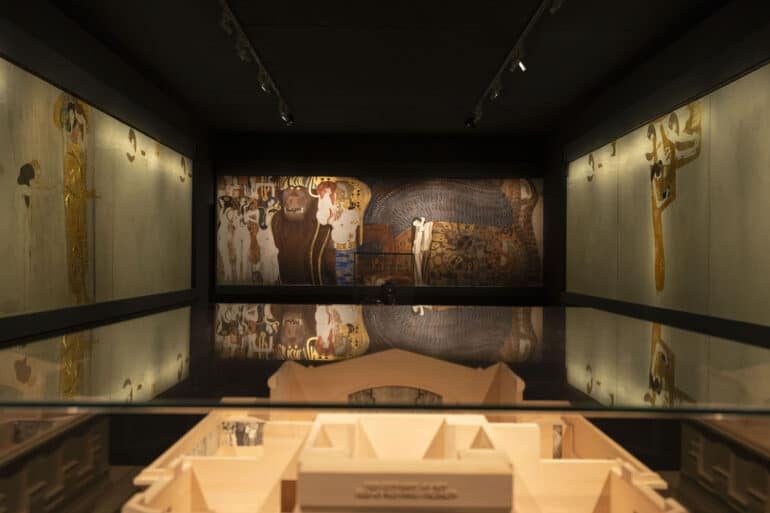A close look into Gustav Klimt’s artistic history and his relationship with Italy in Rome’s Palazzo Braschi
After 110 years of having participated in the 1910 Venice Biennale with a personal room, the works of the Austrian painter Gustav Klimt are once again being exhibited in Italy, at the Museum of Rome in Palazzo Braschi. The exhibition “Klimt. La Secessione e l’Italia” shows the stages of Gustav Klimt’s entire artistic trajectory, highlighting his role as the co-founder of the Vienna Secession and his relationship with Italy – narrating his travels and his successes in exhibitions in the country.
Klimt and the artists in his circle are represented by more than 200 works, including paintings, drawings, posters and sculptures, loaned from public and private collections and the Belvedere Museum in Vienna and the Klimt Foundation, which are among the most important museums in the world for preserving Klimt’s artistic heritage.
The paintings and sculptures from the Belvedere Museum, signed by other artists such as Josef Hoffmann, Koloman Moser, Carl Moll and many others, frame these great works by the Austrian master and contribute to the history of the Viennese Secession period. Autographed postcards document Klimt’s travels to Italy. He visited different cities around the country from north to south, which inspired some of his landscapes.
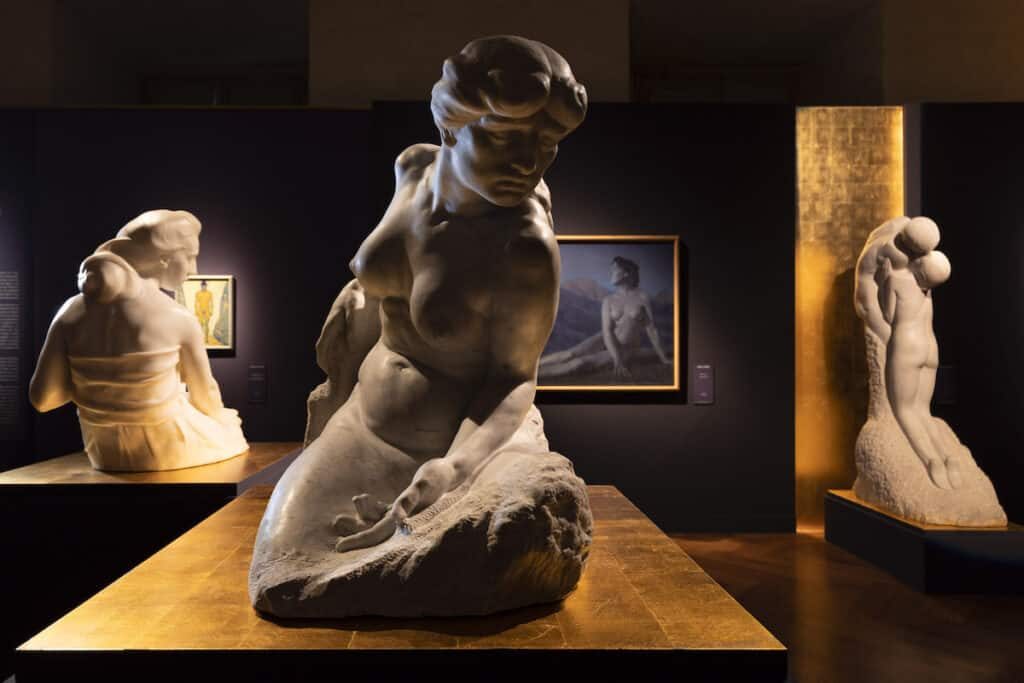
We begin the exhibition with a large panel that situates the visitors in the European and Austrian historical context of the time in which Klimt lived and worked between the mid-19th century and the first decades of the 20th century. In 1857, Emperor Franz Joseph had the ancient walls of Vienna demolished to surround it with a tree-lined double street, the Ringstrasse, populated with gardens, cafés and buildings representative of their functions. Klimt was one of the artists responsible for the construction and decoration of the buildings in the region, among others that made up the Vienna Secession —a movement founded in 1897 that sought to adapt the art to contemporary lifestyles with a close connection between plastic arts, architecture, and design.
Klimt came from a simple family but had the opportunity to study at the Vienna School of Arts and Crafts. He began his career around 1879, working in a studio founded by him, one of his brothers, and a fellow student, specialising in the execution of paintings on walls and ceilings. Having decorated important buildings in Vienna, they received commissions from renowned architects. In addition, Klimt, distinguished by his brilliant technique and realistic detail, made several portraits for the Austrian class, some of which are on display at the exhibition representing the beginning of his brilliant artistic trajectory.
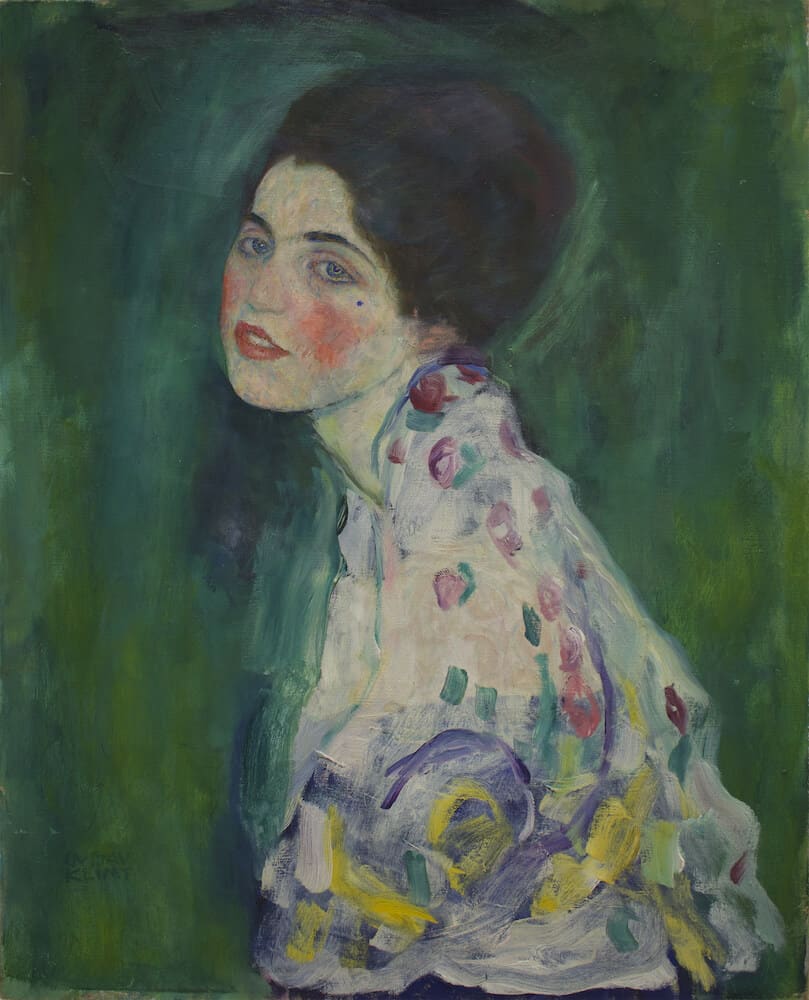
© Galleria d’Arte Moderna Ricci Oddi
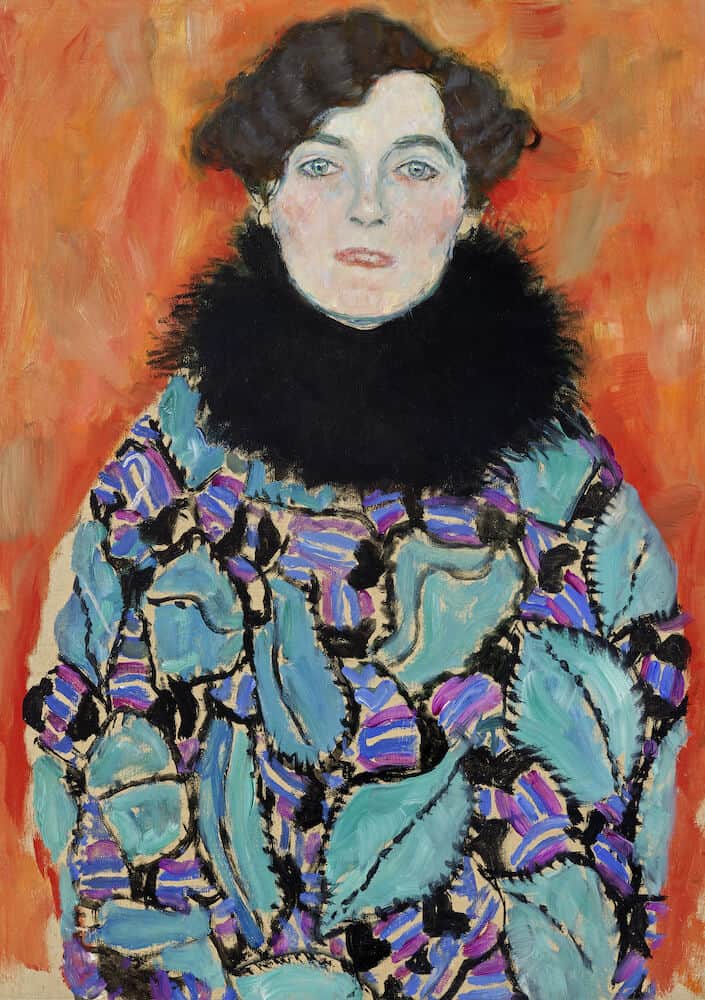
© Belvedere, Vienna Photo: Johannes Stoll
Then, we drastically change the subject and enter the phase in which the artist dares to focus on mostly symbolic female eroticism in his paintings between the 1900s and 1910s. One of the best-known examples today is exposed in the exhibition: the portrait of Judith, a legendary biblical figure, in which Klimt pays homage to the fascination of female eroticism. Klimt’s ambivalent view of women draws attention to a much-debated topic in Vienna at the beginning of the 20th century: the relationship between the sexes. The role of men and women in society, eroticism and sexuality, are subjects seen throughout the works exhibited in the salon. Because his work is heavily focused on portraits, Klimt demonstrates an incredible mastery of painting techniques, both in photo-realistic and impressionistic shading. In each portrait, it seems he is looking for new inspiration, one being always different from another. Like Klimt, other painters have also made extremely attractive portraits of Viennese ladies, creating an atmosphere of intense female power in the exhibition.

In 1902, the Viennese Secession paid homage to Ludwig Van Beethoven, the great German composer, as part of its XIV exhibition. To this end, many artists created original contributions, one of which was a mural over 34 meters in length that stretched for about two meters on three walls of a side room made by Klimt. The artist develops a complex of images that can be seen as a visual interpretation of Beethoven’s Ninth Symphony. The mural now displayed at the exhibition in Rome is probably the most impressive hall as in addition to the visual beauty, it is accompanied by the beauty of the sound of Beethoven’s Ninth Symphony in the background.
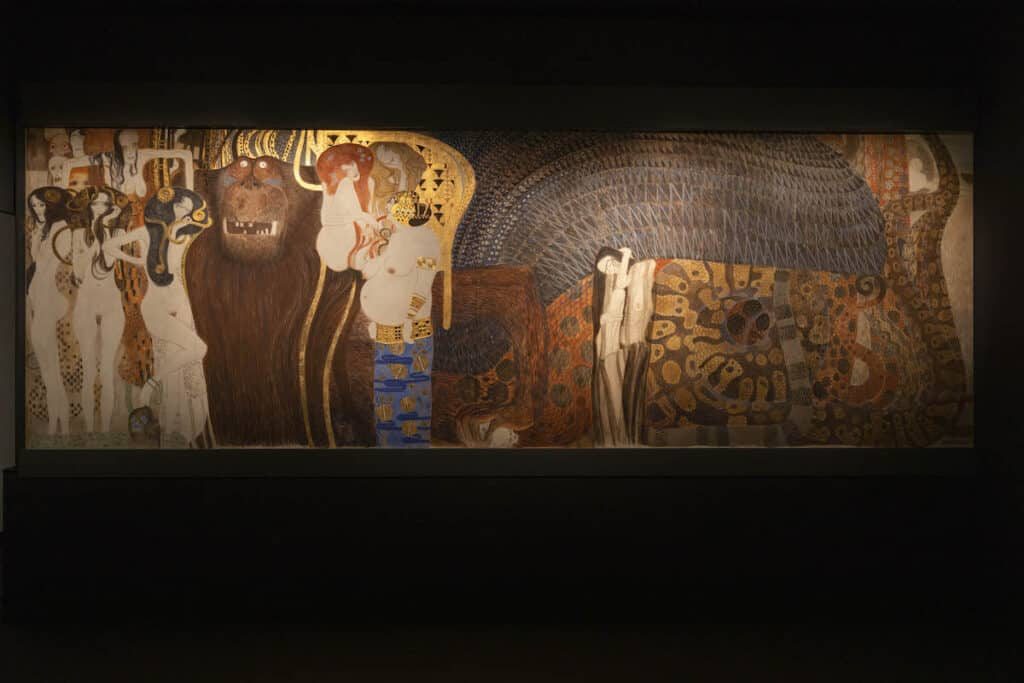
Klimt also explored the theme of landscape, having created paintings of idealised nature, a heavenly, cloudless world. His inspiration was trips through the Austrian countryside and Lake Garda, in northern Italy. Many of his fellow painters from the Viennese Secession also shared Klimt’s preference for aesthetically refined landscapes. With landscapes that invite the eye, these paintings make up one of the lightest rooms in the exhibition. We are also introduced to works from important international exhibitions that Klimt has made throughout his career, such as his appearances at the Venice Biennale. As always, Klimt exposed paintings that challenged issues of the time about men and women in society through portraits.
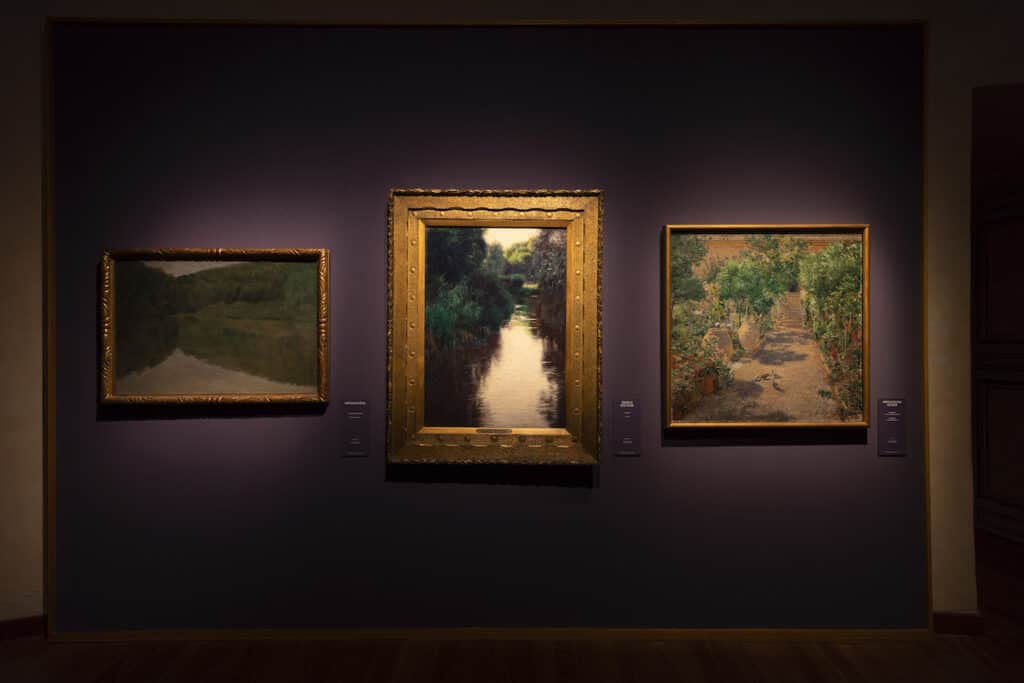
After learning about Klimt’s life and career, at the end of the exhibition, we come across two paintings that speak of his last years. One of them, The Bride, unfinished by the artist as a result of a stroke he suffered in 1918, would lead to his death shortly after. In some parts of the painting, the image is practically complete, while other parts are still basically a sketch. Then, Portrait of a Lady, belonging to the last phase of the artist’s career in which his paintings become less precious and cautious, with a more emotional approach, open to expressionist environments.
The exhibition at the Museum of Rome in Palazzo Braschi will be displayed until March 27th, 2022, and is a must-visit for anyone who wants to have a cultural immersion in European art from the past century.
until 27 March, 2022
Museo di Roma
Piazza Navona, 2 (Centro Storico)
Mon – Fri: 10 am – 8 pm
Sat – Sun: 10 am – 10 pm
Entry fee: €11-13


